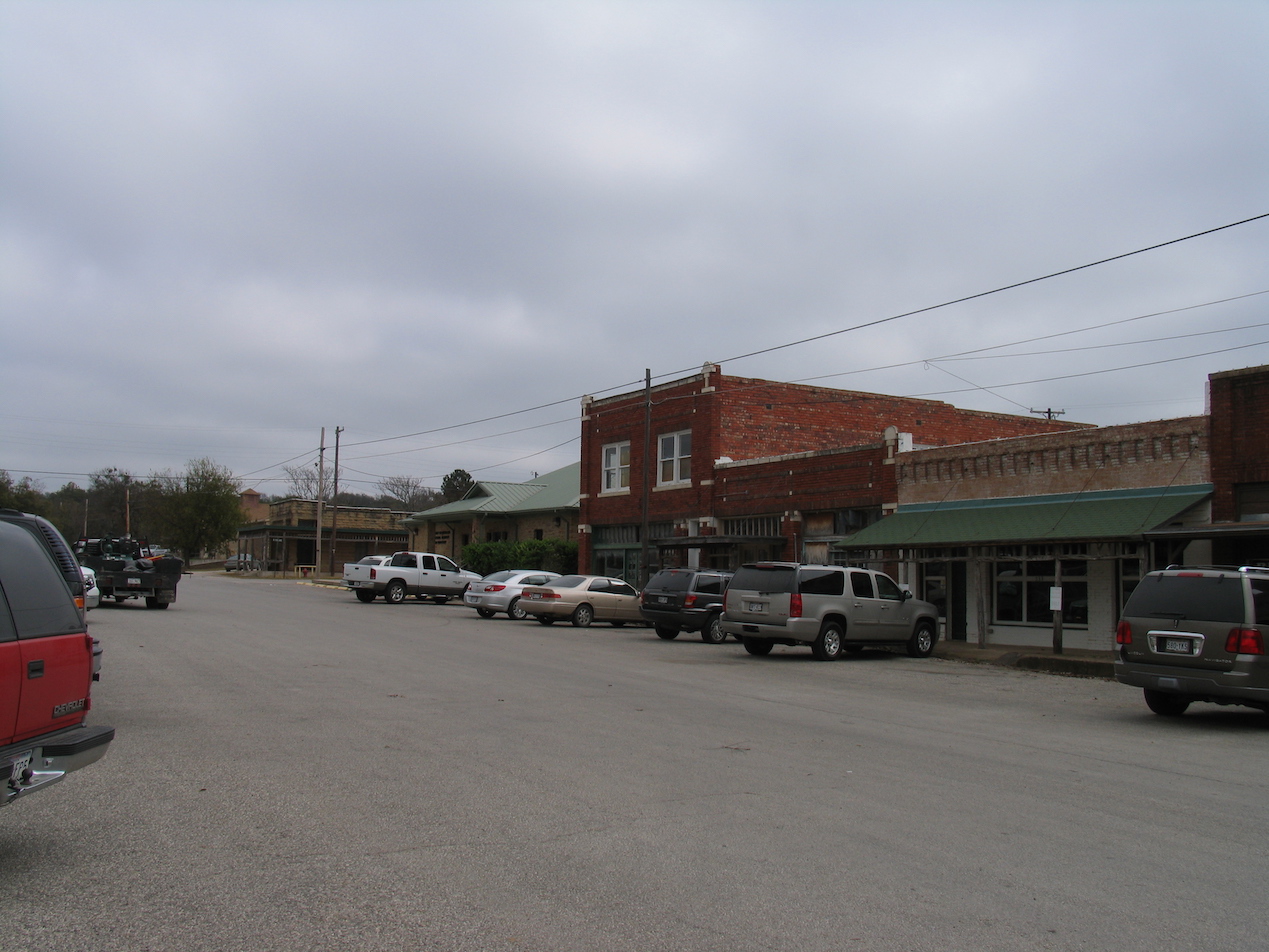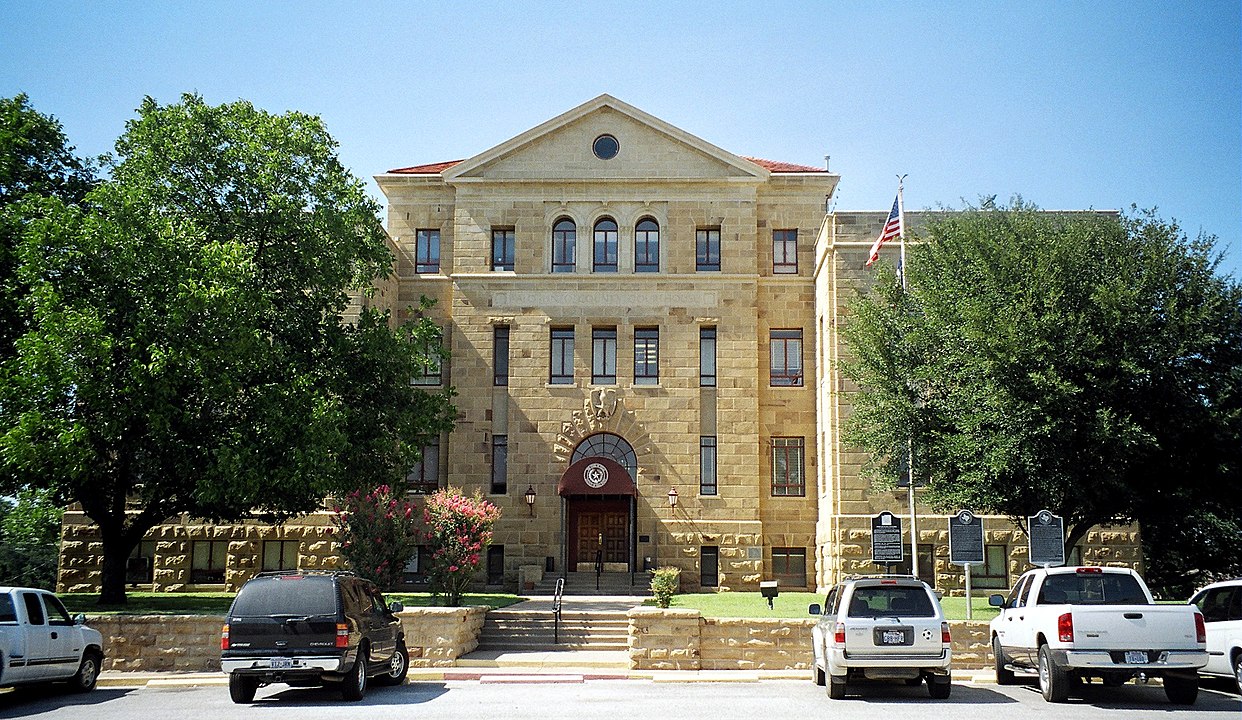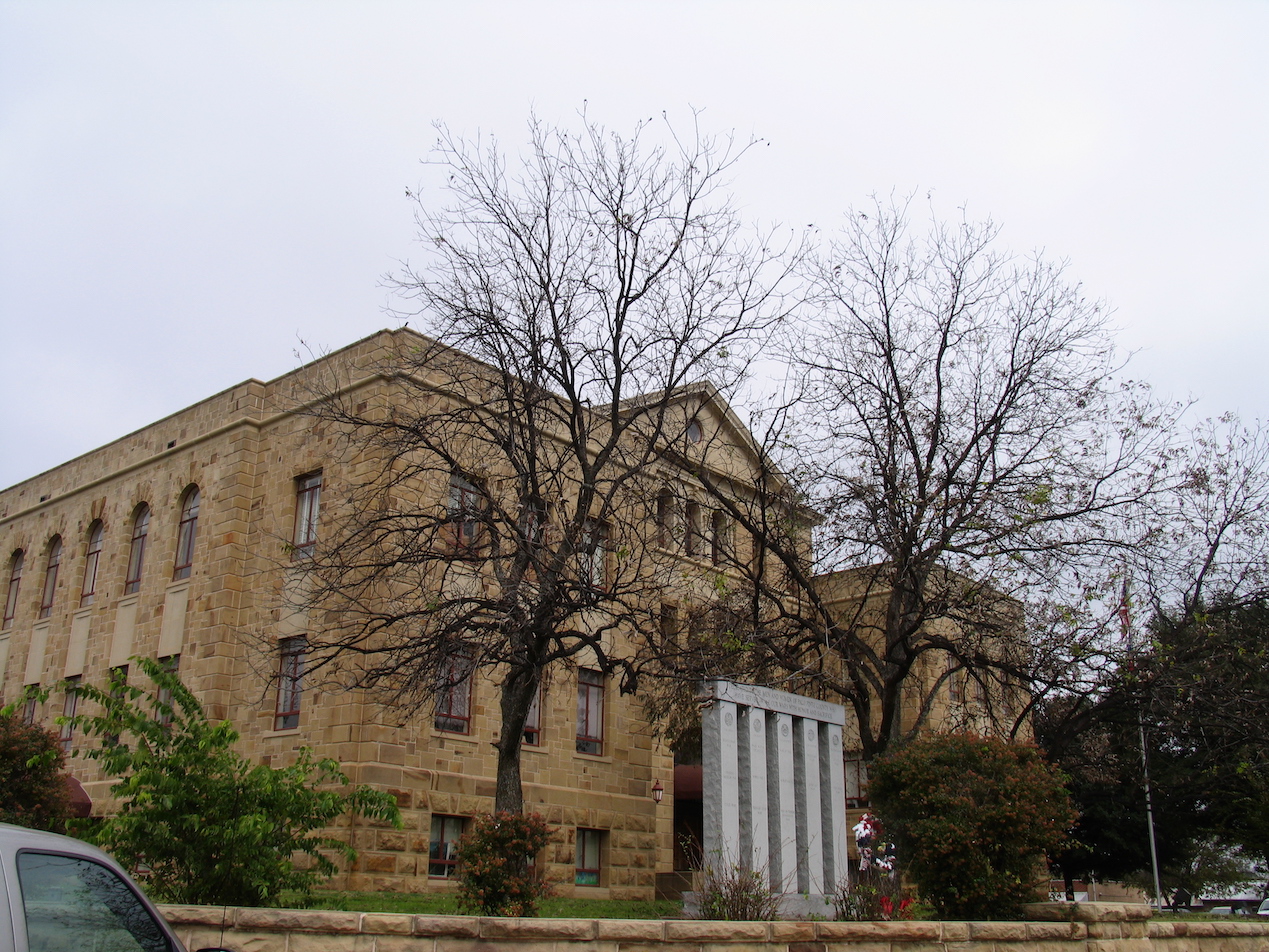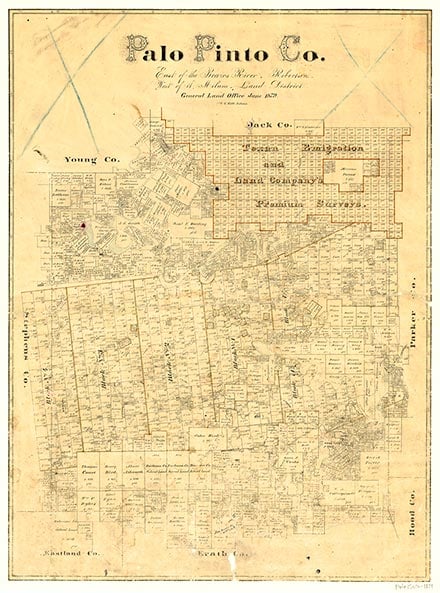Palo Pinto

Palo Pinto, Texas
Photograph Credit: Robert Plocheck.

Palo Pinto, Texas

Palo Pinto, Texas
Photograph Credit: Robert Plocheck.
Palo Pinto, the county seat of Palo Pinto County, is on U.S. Highway 180 and Farm Road 4, twelve miles southwest of Mineral Wells in the central part of the county. Settlers began arriving in the area in 1855, attracted by the fertile soil in the Brazos River valley. A legislative act of August 27, 1856, formed Palo Pinto County and specified that the county seat, to be named Golconda, be located within five miles of the center of the county. The county was organized on May 13, 1857, and at the first meeting of the county court (held on August 18 of that year) steps were taken to have Golconda surveyed and laid out. The Golconda post office was established in March 1858. That same year the name of the community was changed to Palo Pinto, and the post office was renamed accordingly in 1860. The first courthouse cost $300 and was built in 1857; a two-story jail was erected in 1858. Joseph H. Dillahunty was the first postmaster and operated the first general store. Some of his early customers included Charles Goodnight and Christopher Columbus Slaughter. Other enterprises included several saloons, a hotel, and a law firm. James H. Baker began the community's first school in 1858. Hardships caused by the Civil War curtailed most businesses during the 1860s, but during the next decade Palo Pinto became established as a ranching center. The original courthouse was replaced by a native sandstone building in 1881. The town was on the Fort Griffin-Weatherford stage line, which crossed the Brazos at Oaks Crossing. A ferry on the Brazos was replaced by a bridge in 1895. James C. Son started the first newspaper in the county, the Palo Pinto County Star, in Palo Pinto on June 22, 1876. The oldest Masonic lodge in the region was active by that year as well. Palo Pinto was the county seat and only town in the county in 1880, but that year it was bypassed by the Texas and Pacific Railway when its tracks were laid through the area. Although the town declined somewhat, its 1891 population was 400, and its businesses included a flour mill, a bank, a hotel, a gin, and a saloon. In 1940 a new courthouse replaced the 1881 structure. The population of Palo Pinto by 1947 had reportedly reached 550. In 1990 Palo Pinto reported 350 residents and eight businesses; at that time it still was unincorporated. In 2000 the population was 411. The community sponsors an annual old settlers' reunion.
Charles G. Davis | © TSHA

Adapted from the official Handbook of Texas, a state encyclopedia developed by Texas State Historical Association (TSHA). It is an authoritative source of trusted historical records.

- ✅ Adoption Status:
Belongs to
Palo Pinto is part of or belongs to the following places:
Currently Exists
Yes
Place type
Palo Pinto is classified as a Town
Associated Names
- (Golconda)
Location
Latitude: 32.76734860Longitude: -98.29866020
Has Post Office
Yes
Is Incorporated
No
Population Count, 2021 View more »
173

